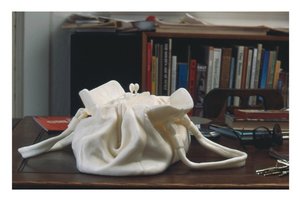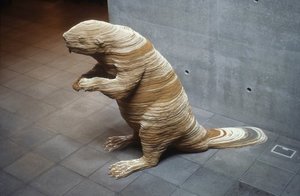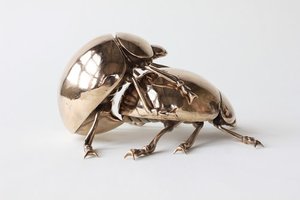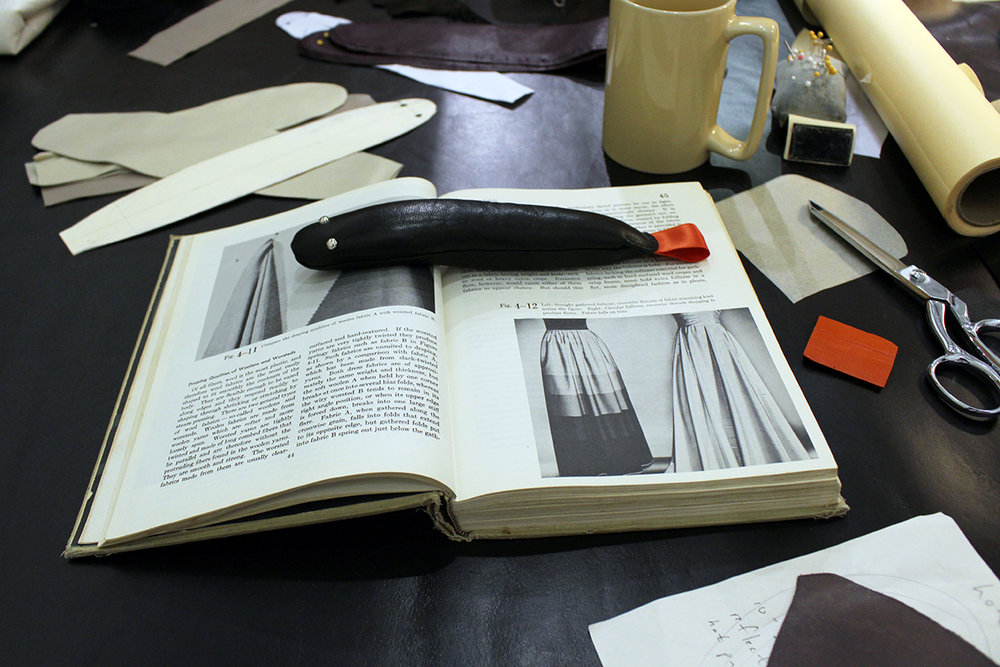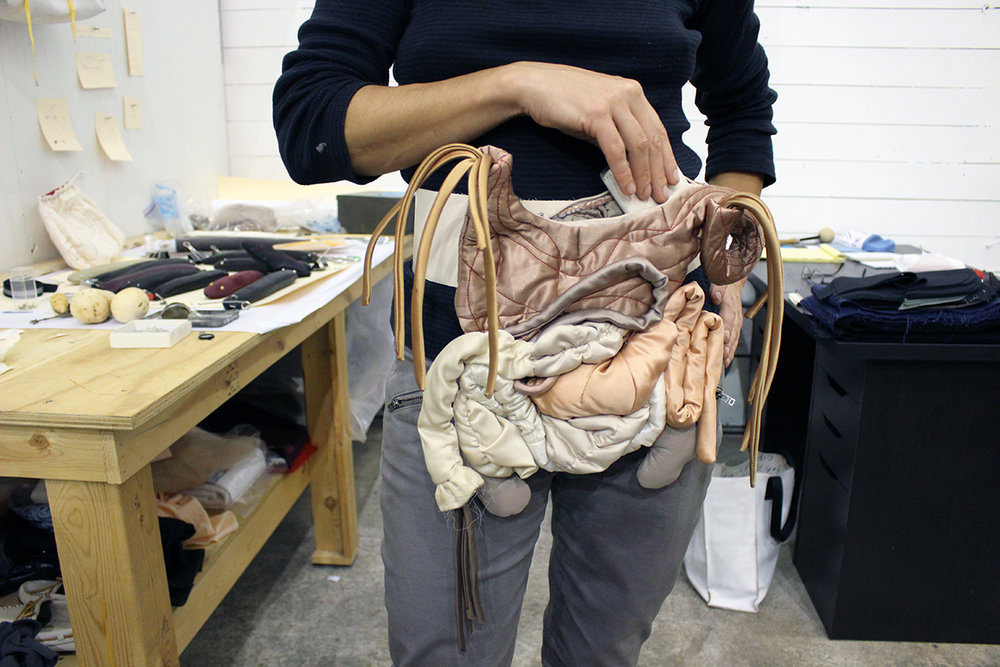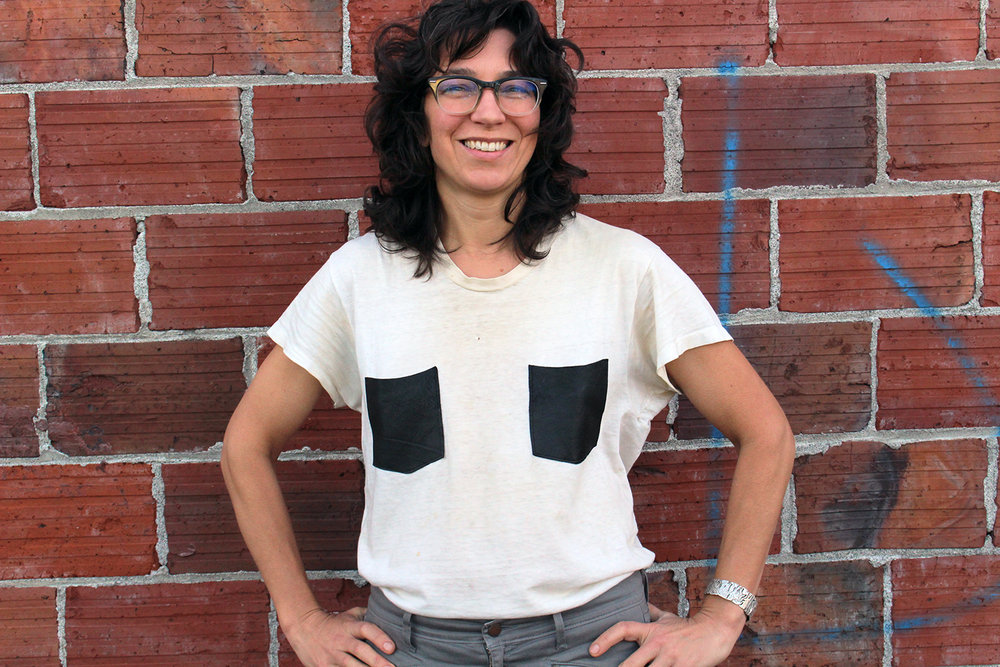PGF pilot Artist-in-Residence, Malia Jensen, sits down with PGF’s Gabi Lewton-Leopold, to talk about design projects she’s exploring during her three month residency at PGF.
Gabi Lewton-Leopold: Your work seems to occupy two main strains: a fine art, primarily sculptural, practice and design objects that have a functional quality. How do you see these two sides of your practice?
Malia Jensen: With the design side, I feel like I get to explore more humor and be a little more lighthearted and maybe explore ideas that I wouldn’t put in my “serious” fine art practice. The turnaround is theoretically quicker. I get to processes something with a greater immediacy.
GLL: Have there been certain concepts that have crossed both sides of your practice?
MJ: I have an affection for useful things and tools, and I tend to think of my fine art as thinking tools with a conceptual aspect, like poetry versus an instruction manual. In contrast, my design objects, like the Bookworm, solve a very literal, direct problem for me, although the problem has an element of poetics too because it’s funny. In the case of the Bookworm, the problem is that your book won’t stay open. I want to address that with this finely made yet humble thing.
GLL: You've mentioned before that you make, “helpful objects that you didn’t know you needed.”
MJ: Yes, I think that part of what I wanted to do here at this residency was explore things that can take care of you. If you have a tool that maybe also makes you laugh and holds your book open while you're reading and eating dinner, or using a cookbook, or just looking at an art book that you want to stare at, if you have some nice way to keep it open, maybe it feels like someone is looking out for you.
GLL: And it also counters the feeling of there being so much crap in the world, physically and emotionally, because you are actually making thoughtful things that are helpful.
MJ: I was thinking of calling it “soft goods for a hard world.”
GLL: I like that! There’s also something very satisfying about the tactile materials you use.
MJ: Yes, and then there are pieces like the "spill your guts" fanny pack. I like morphing things that are gross and hard to think about, or painful, into things that are beautiful and approachable. That idea crosses over both sides of my work—when I say thinking tools in my art work, that is what I try and do too, to give a space for something to be reconsidered or redeemed. Redeeming pain. I like the word redeem because you can redeem a coupon for something or you can also redeem a soul. It’s the same word for this kind of transaction where you make something or turn something into something else, it’s shifting value.
GLL: I’m curious also about your use of materials in both sides of your work. You use so many different materials—fabric, ceramics, metals, wood, and so forth—in the past, and still do. You seem to have mastery over all of them!
MJ: I don’t know about mastery, I think I just have will. Funny because sometimes I go headlong into something I actually don’t know how to do, and by the end I’ll just be able to fool you that I knew what I was doing.
GLL: Are all these things mostly self taught?
MJ: Mostly.
GLL: What was first?
MJ: I studied painting and then I realized after I got out of school that I had an affinity for objects that I wasn’t addressing in painting. I guess art school at the time was really painting oriented, I don’t know it was the 80s!
GLL: What were your paintings like?
MJ: They were big figurative paintings that had a kind of portent—doom was always around the corner in pretty much everything. Now I add humor but doom is still around the corner! I’ve always made and built things, so I brought that into my work. I have makers and artists in my family; my mom always made a lot of things, from weaving to painting, and my dad was a potter.
GLL: What attracted you to the idea of a residency at PGF?
MJ: What drew me to it was partly that as an artist I often work in solitude. I love the idea of working with other people who are busy and are doing their own work. That in itself is an inspiration, just to be around people who are manifesting projects. I also wanted to experiment with a different kind of problem solving. This is a work place and I want to come and bring some of my problems into the work place and say “how do I work through this and make it into a viable design” or what ideas do I let go of? That has been really interesting because I’ve let go of a lot.
GLL: Did that surprise you?
MJ: Oh, kind of. There were a few high-minded ideas that I let go of in favor of pursuing things that are smaller and funnier, and maybe less about solving the world’s problems. This is a unique program, there's an aspect of independent study to it. You're in a busy environment and learning by looking, because of course, it’s a working factory. It’s not structured like other residency programs, it’s exposing you to a different practice. If it was a typical residency program you'd have a studio and just be left alone to pursue your work in a different space, surrounded by other artists who are also working in the solitude of their studio spaces, and you probably all get together for meals. The artist role as the PGF AiR is about self-driven projects but also about generating an exchange between art and industry. It’s quite a different beast. I've found coming here 3 or 4 days a week gives me the time I need to maintain the rest of my studio practice and work life.
GLL: Let’s talk about your new project that you are working on at PGF.
MJ: I’ve literally had allergic reactions to bras and have had a long obsession with not wearing them, so I decided to offer a service. If you send a t-shirt or sweater to me at PGF I'll sew leather pockets onto it so that you can feel defiantly discreet. I’m calling the company Sans-a-Bra... maybe. Particularly in the summer when it’s hot and you’re working outside or just doing anything physical, it's a challenge to feel comfortable while wearing bondage around your torso. I know that some women structurally need the support that leather pockets on your t-shirt just won't provide, but I want there to be another option. A "more comfortable" bra is still a bra. I think there’s a tyranny of squishing your nipples down, or putting adhesive products over them. Clothing, if it’s for women, is designed with the assumption that we're going to wear a bra under it. Shirts typically have one breast pocket, how about two? Then you have some coverage. Think of this as leather jackets for your breasts.
GLL: How does the service work?
MJ: Put your T-shirt or sweater on, make sure it's straight, mark your nipples with tape, safety pins or chalk, send it to me here at PGF, or drop it off, and I’ll send it back with leather pockets on it. $20 for machine stitched shirts, $30 for hand-sewn sweaters. $5 for shipping would be great but you can also come pick it up at our super fun program launch/open studio at PGF on November 30 from 5:00- 7:00!
GLL: We started talking about developing this program back in June. How does this project and your other work here fit with how we envisioned the AiR program?
MJ: After working with you and Britt this summer on shaping the program, and knowing it would develop as we went, it has been humbling and illuminating to actually be here as the AiR. Finding the reality between envisioning something and manifesting it is always interesting and the range of ideas I came in with has given me some solid satisfactions and some glorious failures. I let go of several project ideas pretty quickly but I feel great about what I am working on now.
I think the Bookworm is a good example of my willingness to take what might be a funny, spontaneous idea far enough to make it into a sincerely useful and perhaps even chivalrous object. It wasn't something I'd planned to make prior to being here but it might be my favorite thing.
GLL: Can you talk about your decision to turn Sans-a-Bra into a service?
MJ: The Sans-a-Bra project evolved from wanting to produce something (dare I say, a "line"!) that would be available for purchase, to becoming an alteration "service." It's interactive by nature and feels like a perfect fit with some of the mission ideas we talked about this summer, like creating ways to reach out to our shared communities and build conversation around creative endeavors.
GLL: Any other design ideas that you haven't had a chance to dive into yet?
MJ: For years I've been obsessed with the apparent fact that there's no classy bag designed for the back of a wheelchair. My dad always used a tote bag pulled awkwardly sideways on the handles. This was an idea however, where I quickly realized I was over my head and also recognized it would be hard to finance, but I'm not done with it yet. I love the idea of collaboration and maybe there's still time to do something together with PGF when we're all not so busy with everything else!
Thanks to Malia for being our pilot Artist-in-Residence! She’s helping define and test out the program and we’re excited to also have her as a member of the AiR Advisory Board. Don’t forget to send or drop off your t-shirts and/or sweaters to Malia at PGF for her Sans-a-Bra service! She’ll be accepting orders at PGF through November 15th. Questions about this special service? Contact Malia directly: malia@maliajensen.com. Orders will be available for pick up during the AiR launch party/open studio on November 30 (5–7pm)!


